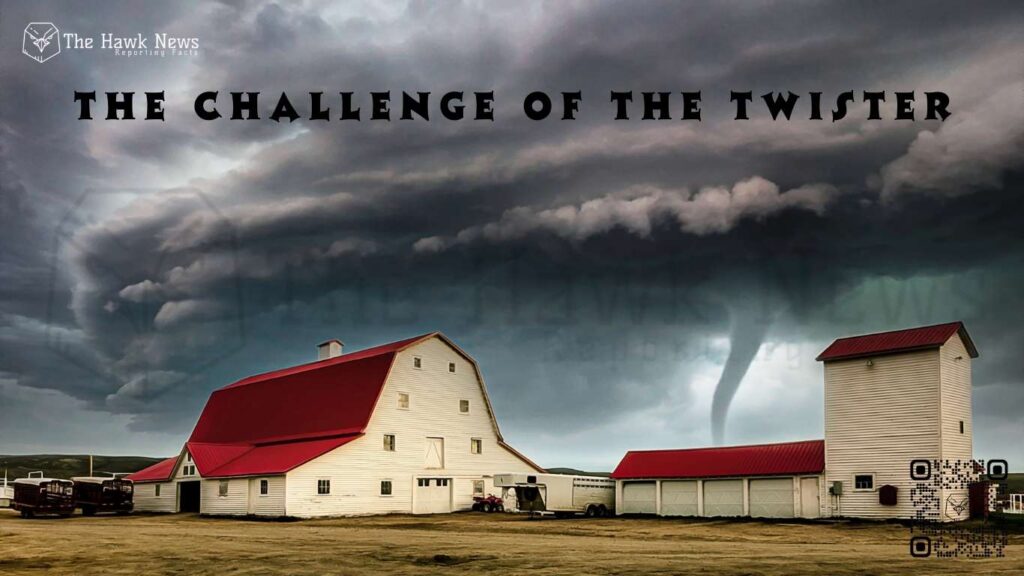
When a tornado strikes, it leaves a trail of destruction, often with little warning. The swirling monster of wind and debris can level homes, uproot lives, and shatter communities. For decades, tornadoes have remained among the most unpredictable and violent natural disasters. But now, science and technology are stepping up to ask the question: Can we outsmart nature’s most chaotic force?
With the rise in frequency and severity of extreme weather, experts and engineers are reimagining what it means to predict, withstand, and even “tornado-proof” the future.
The Challenge of the Twister
Tornadoes are born when warm, moist air collides with cold, dry air—often within supercell thunderstorms. This mix creates an unstable atmosphere, triggering powerful rotating columns of air. But unlike hurricanes, which are tracked days in advance, tornadoes can form in minutes and strike with little notice.
On average, the U.S. sees more than 1,000 tornadoes each year, with the most intense rated EF4 or EF5 on the Enhanced Fujita Scale, producing winds over 200 mph. These winds can rip buildings apart, throw vehicles, and leave entire towns in ruins.
Despite advances in radar and storm tracking, tornado warnings still average around 8 to 13 minutes—a precious but dangerously short window for survival. That’s why the conversation is shifting from prediction alone to prevention and resilience.
Smarter Forecasting with Artificial Intelligence
One of the most exciting developments in tornado forecasting is the use of artificial intelligence (AI) and machine learning. Traditional forecasting models rely on vast amounts of data from Doppler radar, satellites, and surface observations—but they still struggle to accurately pinpoint where and when a tornado will hit.
Enter AI.
Researchers at the National Severe Storms Laboratory (NSSL) and tech partners like IBM and Google AI are feeding historical storm data into learning models that can recognize the subtle signals of tornado formation. These models analyze atmospheric pressure changes, wind shear, humidity, and even lightning patterns to predict tornadoes earlier and more accurately.
In 2023, a University of Oklahoma project using AI-based forecasting managed to identify tornado potential up to 30 minutes earlier than traditional methods—offering a game-changing leap in safety.
New Frontiers in Warning Systems
Beyond forecasting, the next frontier lies in how we alert the public. The challenge isn’t just knowing when a tornado might strike—it’s ensuring people take action in time.
Apps like MyRadar, NOAA Weather Radar Live, and AccuWeather are integrating real-time alerts and even voice-activated warnings through smart devices. In tornado-prone areas, some counties are testing geo-fenced SMS alerts that send location-specific warnings even without internet service.
In addition, outdoor smart sirens powered by solar panels and connected to weather networks are replacing outdated civil defense sirens. These smart sirens adjust their volume and direction based on population density and wind conditions to ensure more people hear the warning.
Tornado-Resistant Architecture: Building Smarter
Predicting tornadoes is only part of the battle. Surviving them depends on where—and how—you live.
In places like Oklahoma, Texas, and Kansas, engineers are pushing the boundaries of tornado-resilient construction. The Federal Emergency Management Agency (FEMA) has introduced guidelines for safe rooms, built with reinforced concrete and steel doors that can withstand EF5-level winds.
Now, forward-thinking developers are going further. Some new community homes are being built using insulated concrete forms (ICFs), impact-resistant windows, and aerodynamic roofs designed to reduce wind lift. These structures, once considered luxury or commercial-grade, are slowly entering suburban design trends.
Post-disaster rebuilds in Moore, Oklahoma—ravaged by EF5 tornadoes—have incorporated these design features, showing that resilience can be affordable and lifesaving.
Underground Shelters Make a Comeback
As climate threats escalate, the humble storm shelter is regaining popularity. Modern shelters are no longer dark, damp holes in the ground. Today’s designs include ventilated, lit, and steel-reinforced pods installed in garages, basements, and even yards.
Companies like Survive-a-Storm and F5 Storm Shelters report rising sales year-over-year, especially after major tornado outbreaks. FEMA offers grants for shelter installations, and in some states, builders are required to offer shelter options in new constructions.
One standout innovation? Portable tornado pods that can be placed inside mobile homes or apartments—giving renters a level of safety once unavailable to them.
The Role of Drones and High-Resolution Imaging
Drones have revolutionized the way scientists understand tornado behavior. Research teams are using unmanned aerial vehicles (UAVs) to fly into post-storm areas and capture high-resolution imagery of debris paths and damage patterns.
These insights feed back into engineering, helping design stronger homes and understanding how tornado winds interact with structures.
Some ambitious teams are even experimenting with deploying drones into active storms to gather real-time data—offering a new frontier in live storm intelligence.
Educating the Public: Tech Meets Awareness
Technology is only as powerful as the people who use it. Schools, workplaces, and community centers are incorporating virtual reality (VR) tornado drills, giving people simulated experience on what to do when the sirens sound.
In fact, some cities are partnering with local meteorologists and influencers to launch TikTok and Instagram campaigns teaching younger generations about emergency preparedness in formats they understand and relate to.
The message is simple: preparedness saves lives.
Can We Truly Outsmart Nature?
The truth is, we may never fully control tornadoes—but we are getting smarter, faster, and stronger in how we face them.
As one FEMA official put it, “We’re not looking to stop tornadoes. We’re working to ensure that when they do come, we’re ready to survive them.”
The convergence of AI, architecture, engineering, and public education is giving rise to a new age of tornado preparedness—one that’s not built on fear, but on resilience.
So the next time the winds begin to roar, know this: technology is helping turn chaos into a chance for survival.